- News
- Reviews
- Bikes
- Components
- Bar tape & grips
- Bottom brackets
- Brake & gear cables
- Brake & STI levers
- Brake pads & spares
- Brakes
- Cassettes & freewheels
- Chains
- Chainsets & chainrings
- Derailleurs - front
- Derailleurs - rear
- Forks
- Gear levers & shifters
- Groupsets
- Handlebars & extensions
- Headsets
- Hubs
- Inner tubes
- Pedals
- Quick releases & skewers
- Saddles
- Seatposts
- Stems
- Wheels
- Tyres
- Tubeless valves
- Accessories
- Accessories - misc
- Computer mounts
- Bags
- Bar ends
- Bike bags & cases
- Bottle cages
- Bottles
- Cameras
- Car racks
- Child seats
- Computers
- Glasses
- GPS units
- Helmets
- Lights - front
- Lights - rear
- Lights - sets
- Locks
- Mirrors
- Mudguards
- Racks
- Pumps & CO2 inflators
- Puncture kits
- Reflectives
- Smart watches
- Stands and racks
- Trailers
- Clothing
- Health, fitness and nutrition
- Tools and workshop
- Miscellaneous
- Buyers Guides
- Features
- Forum
- Recommends
- Podcast
review
£299.99
VERDICT:
As a user experience packed with features, the 520 vastly outstrips the 510 and is a pleasure to use
Weight:
58g
Contact:
At road.cc every product is thoroughly tested for as long as it takes to get a proper insight into how well it works. Our reviewers are experienced cyclists that we trust to be objective. While we strive to ensure that opinions expressed are backed up by facts, reviews are by their nature an informed opinion, not a definitive verdict. We don't intentionally try to break anything (except locks) but we do try to look for weak points in any design. The overall score is not just an average of the other scores: it reflects both a product's function and value – with value determined by how a product compares with items of similar spec, quality, and price.
What the road.cc scores meanGood scores are more common than bad, because fortunately good products are more common than bad.
- Exceptional
- Excellent
- Very Good
- Good
- Quite good
- Average
- Not so good
- Poor
- Bad
- Appalling
Garmin has released an update to the Edge 510 with this new model, the Edge 520, and it’s a marked improvement on its predecessor, impressing us with its refreshed interface and features.
Strava Live Segments
Headlining with the built-in ability to support Strava Live Segments, Garmin has taken live monitoring of your performance out on the road to new levels. It's a development that will delight segment hunters out there, and it works very well. All you need to do is upgrade to Strava Premium, re-establish your Garmin account with the Strava platform, and away you go.
Find your nearest dealer here
Buy this online here
Your Strava starred segments are used to populate the 520's database of live segments, along with a selection of popular segments from your local area. You just ride up to the segment, and the device cuts in with warnings of its approach and live comparisons against the KOM, the fastest person you follow, or your own PR. It doesn't require a link up to your phone, and your ride and segment times are posted as normal when you come to upload your ride.
Handily, this function can also be switched off entirely, or certain segments disabled from the 520 itself. So if you want to have them there when you're planning to go full bore, you can; if you want to take it steadier without the 520 blinking at you and making you feel like you should be working harder, without losing them from your unit, then that's okay too.
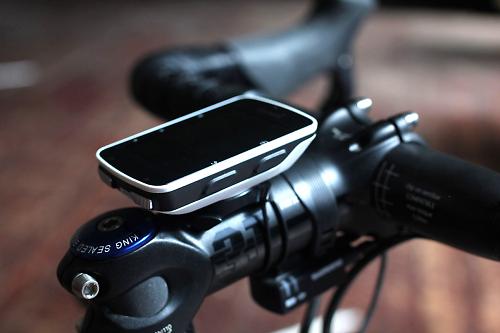
Frankly, our only criticism of the system is that the Live Segments don't work when you're following a course – sometimes necessary we think if you're following a new route out to a segment you've done before and have starred. It's a limitation we'd hope will be fixed in a coming round of firmware updates, but for now, no following courses and using Strava Live Segments simultaneously.
It also shouldn't be considered as a single feature to spur you on to upgrading – Garmin has released firmware updates that will allow Strava Live Segments to be used on the 510, 810 and 1000, so this feature will still appear on those devices, subject to that Strava Premium subscription.
Usability
Physically, the body of the 520 has shrunk over the 510 (4.9cm x 7.3cm x 2.1cm), and is lighter too. The 510 was never a heavyweight, but at 58g the 520 really doesn't add anything noticeable to your bike's weight at all. This is impressive considering the upgraded screen the 520 houses, which is slightly bigger than the 510's and has a 200 x 265 pixel resolution and much better variable backlighting and colour saturation. The panel remains reflective, but you hardly notice with the vibrancy of the screen. It's a welcome upgrade.
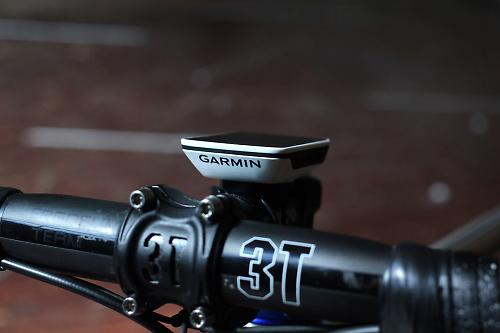
Another welcome design change, if arguably against the grain with portable technology as a whole these days, is the switch back to non-touchscreen and a button interface. Going back took a few rides and plays to get used to, but having done so, and enjoyed the much faster response to my commands over any touchscreen Garmin device I've used previously, I'll personally be sad to return to any of the touchscreen stable. An added benefit is that you won't as easily find yourself striking the 'Discard' button, as you have to actually navigate to the option to select it, with the default being to 'Save'.
Menus are recognisable from previous Edge products, which makes it all the easier for Garmin users, while course uploads from Strava and Garmin, and syncing with Garmin Connect, processes much quicker than with previous units. You're never left waiting around, and the annoying freezing when loading a course I occasionally encountered with my old 510 unit (I'm currently using a replacement 510 under warranty) is certainly a thing of the past.
>> Too much? Check out our guide to the best cheap GPS cycling computers here
Another small change has been a switch to a smaller USB cable, which might annoy people looking to upgrade and use their old cable as a backup, but this new one saves space and no doubt helps with the faster data transfers – it's a small price to pay.
Additionally, out on rides the 520 never lost GPS signal, even under heavy tree cover, indicating a great improvement over the old 510 which too often beeped at you with a 'Lost Signal' message.
The features
For everyone who loves devices packed with features, the 520 has them in spades.
Built into the system, the unit includes GPS and GLONASS satellite chips, a barometric altimeter, phone message compatibility, all the usual sensors including left and right pedal power recording from Vector pedals and compatibility with other power meters, Shimano Di2 integration, LiveTrack, Varia bike radar and light compatibility, training zone measuring, Functional Threshold Power monitoring, VO2 recording, and recovery time predictions as well as the usual refinements.
It even boasts a basemap, but as with most basemaps this only gives you a general idea of where you are in the area and can't be used to plot a route home. In fact, on the rides we took it out on we found it telling us that we were passing over a major road or railway line, which was around 500m or so away. So, not highly accurate, but enough for you to zoom out to estimate where you are at least.
Also talking of zoom, Garmin has included an auto-zoom feature when following a course. This seems to replace the screen that popped up when a junction was approaching, instead zooming down on the trace line to give more detail. On paper, this should work well, but it takes a lot of getting used to, especially considering the device zooms in far too late and without warning for junctions – which means you're easily at the turning you need to take as the screen adjusts and shows a left or right turn, rendering you helpless and you plough headlong down the wrong road. It's an issue I got used to largely, but it made me a touch nervous of missing the turning when I didn't know which way to go. Thankfully, the auto zoom can be switched off for peace of mind, letting me stick to my preferred 300m viewpoint.
With all the features stashed inside as well as that improved display and smaller, lighter design, you might expect battery life to take a hit. It has, compared with the 510, but still retains up to 15 hours of life – an estimate I largely concur with following my test rides. It's long enough for a full day's ride and then some, even with the backlight working and scrolling through multiple pages.
The bundle
Garmin provides the 520 as a single unit and as a bundle. We had the bundle to test, and can report some improvements over the 510's supplied ANT+ bits. The cadence and speed sensors now incorporate a band-fasten system, like the stem bracket attachment, instead of using zip ties, which is handy if you want to shift the sensors from one bike to another. The speed sensor fastens to the hub, while the cadence sensor simply fits to the crank arm. No need for magnets here!
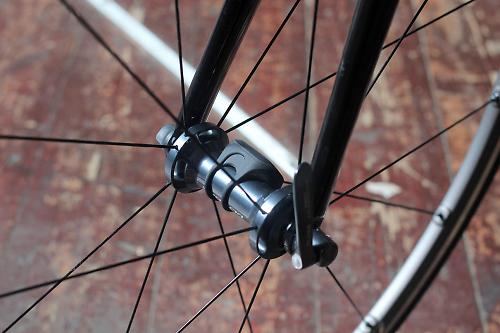
Additionally, the heart rate band has seen a slight redesign, presumably for more accurate and reliable HR monitoring. Having had no problems with the older one, and with this one feeling slightly less flexible than the old one when compared directly, I can't say it's as comfortable, though this could very well be down to lack of use. On a performance level, they're on a par. The bundle comes in at £299.99 – £60 more than the unit on its own – but in my view this is a price worth paying to maximise the cost-effective data that can be taken from the 520, the caveat being if you can locate discounted bits or you already own ANT+ peripherals.
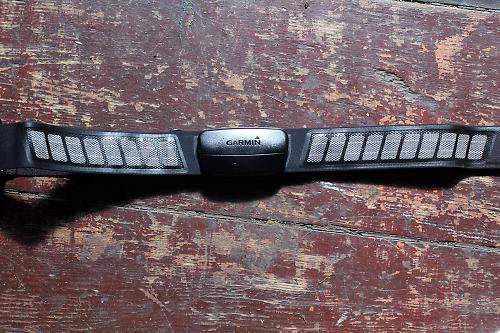
Conclusion
The Edge 520 is one very impressive piece of kit. It works smoothly, with a nicely redesigned control interface and display, and is bang up to date with all the features (barring full mapping) you could want from a cutting edge performance monitioring tool. The Strava Live Segments work well during 'non-course' rides, and provide that little bit of optional motivation should you want it (subject to subscribing to Strava Premium).
Bottom line, would I recommend it to someone? Yes. As a user experience packed with features, it vastly outstrips the 510 and as such makes it a pleasure to use. What features aren't so brilliant can be switched off, so you're not stuck with the niggles I discovered during my time with it. If you already own a 510, though, and are satisfied with the user experience and analysis you currently get, and not bothered about always having the latest and greatest kit, you might want to wait around for the next one.
Verdict
As a user experience packed with features, the 520 vastly outstrips the 510 and is a pleasure to use
road.cc test report
Make and model: Garmin Edge 520 Heart Rate and Cadence Bundle
Size tested: Black
Tell us what the product is for, and who it's aimed at. What do the manufacturers say about it? How does that compare to your own feelings about it?
Garmin says, on the Edge 520:
- Offers in-ride challenges through Strava live segments
- Reports cycling-specific VO2 max and recovery time when used with power and heart rate
- Pairs with compatible ANT+® indoor trainers for data display and control
- Tracks Functional Threshold Power (FTP), watts/kg and cycling dynamics when used with Vector™ or Vector 2 power meters
- Connected features: automatic uploads, live tracking, smart notifications, send/receive courses, social media sharing, weather
Tell us some more about the technical aspects of the product?
Garmin says:
Here's Your Competitive Edge
We started with the aerodynamic form factor of the popular Edge 500, added in-ride challenges on Strava live segments, color display, connected capabilities and advanced analysis features. The result '' Edge 520, the GPS bike computer that's right-sized for competitive cyclists and packed with the features you crave.
Prove Your Edge
Edge 520
Edge 520 is the first bike computer that's compatible with Strava live segments and includes a 3-month trial of Strava Premium. With this membership, your starred Strava segments automatically sync with the 520 for live feedback during your ride. You'll also get alerts for segment start and finish and leaderboard rankings once you complete the segment.
Train on the Edge
Need some motivation to get through those lonely miles on the indoor trainer? Edge 520 delivers with a suite of training capabilities when paired with compatible ANT+ indoor trainers. Let's say you want to train at an average power of 240 watts. Just set the target on Edge 520, start pedaling, and the trainer will automatically adjust to keep you at your target while the 520 shows your stats. You can also follow a course that you or another rider created and literally race the recorded stats, with the trainer adjusting resistance to match the elevation profile.
Edge 520, the GPS bike computer that's right-sized for competitive cyclists and packed with the features you crave.
Pair it with a power meter and Edge 520 offers an additional set of features, like FTP and watts/kg tracking, so you can compare yourself to others, as well as cycling dynamics. A built-in FTP test helps you establish your baseline either on the trainer or on the road. Add heart rate and the 520 can derive your VO2 max estimate and post-ride recovery time, which indicates how long before you should attempt another hard effort.
Optimized Display
Edge 520 compromises nothing when it comes to display '' 2.3 inches of high-resolution color. We maximized the display so you get the most live area in relation to the compact size of the 520. You'll also appreciate the screen clarity in all lighting conditions.
The Connected Bike
Edge 520 is compatible with ANT+ sensors, including Varia™ bike radar and lights4, speed, cadence, heart rate, Edge and VIRB® remotes and compatible weight scales. It also integrates with Shimano Di2 electronic shifting systems5 to display your current gear on the screen. Edge 520 is also compatible with ANT+ power meters, including the Vector series.
Smartphone Connectivity
When paired with your compatible phone and the Garmin Connect™ Mobile app, Edge 520 offers live tracking, smartphone alerts, social media sharing, weather and wireless uploads. Once your ride is complete, the data can be automatically sent to Garmin Connect™, our online community where you can save, plan and share your rides.
Off the Beaten Path
The compact, rugged form factor and 15+ hour battery life of Edge 520 make it ideal for off-road adventures. It's also compatible with GPS/GLONASS satellites, so you benefit from more signal options, wherever your ride takes you.
Rate the product for quality of construction:
9/10
The unit is finished beautifully, and would receive a 10 if the heart rate monitor supplied with the bundle was a touch more comfortable.
Rate the product for performance:
9/10
Works brilliantly in all conditions, and GPS signal never drops out. A shame that the Strava Live Segments don't work when navigating a course.
Rate the product for durability:
10/10
It's dealt with everything thrown at it, including an accidental drop – and still looks like new. The clips that hold it in place are now even more secure than the previous 510.
Rate the product for weight, if applicable:
10/10
Hardly noticeable on your bars – for a device of this size, that's all we can hope for.
Rate the product for value:
7/10
Garmins always cost a premium, but the 520 does seem to represent reasonable value with the features and user experience it provides. We recommend going for the bundle to make the most of the performance monitoring it offers (power aside).
Tell us how the product performed overall when used for its designed purpose
Excellent.
Tell us what you particularly liked about the product
Non-touch user interface, screen, weight, general finish and quality.
Tell us what you particularly disliked about the product
A shame that the Strava Live Segments a) don't work when using a course, and b) require a Premium subscription, which at the end of the day means more financial outlay.
Did you enjoy using the product? Yes
Would you consider buying the product? Yes - but would seriously question whether I need one to replace my 510.
Would you recommend the product to a friend? Yes - but would encourage them to research what it is they want out of their unit first.
About the tester
Age: 25 Height: 188cm Weight: 83kg
I usually ride: Specialized Allez Sport My best bike is:
I've been riding for: Under 5 years I ride: Most days I would class myself as: Experienced
I regularly do the following types of riding: time trialling, club rides, sportives, general fitness riding
Latest Comments
- Mr Blackbird 4 hours 59 min ago
A lot of large SUV drivers seem to be fat. Maybe owning a large, wide car makes them feel slimmer. A bit like buying their clothes from Jackamo (...
- Dnnnnnn 4 hours 27 min ago
It is sad for the individuals concerned but (and this is a general point, rather than specific to this story), we're much better off overall for...
- No Reply 5 hours 18 min ago
I agree with Pogacar regarding social media. The likes of Facebook, Instagram have done untold damage, especially to the minds of young people....
- David9694 5 hours 22 min ago
Lorry carrying 25 tonnes of beer catches fire on the M11...
- No Reply 5 hours 27 min ago
If you're a cyclist on a road you are public enemy number 1.
- Rendel Harris 5 hours 56 min ago
He advocates only riding mountainbikes solely offroad for ultimate safety, which is great if you're a millionaire of leisure living in Colorado...
- ktache 6 hours 27 min ago
That looks like a fun bike. Frame only, 2 and an 1/2 grand.
- wtjs 7 hours 24 min ago
Fair enough, personal experience may trump (not that one) theory. However, the bonking I have experienced has been due to lack of carbs. Your point...
- Rendel Harris 8 hours 51 min ago
mdavidfrodo?
- wtjs 12 hours 30 min ago
in the UK we have policing which to a greater or lesser extent relies on assistance from members of the public......





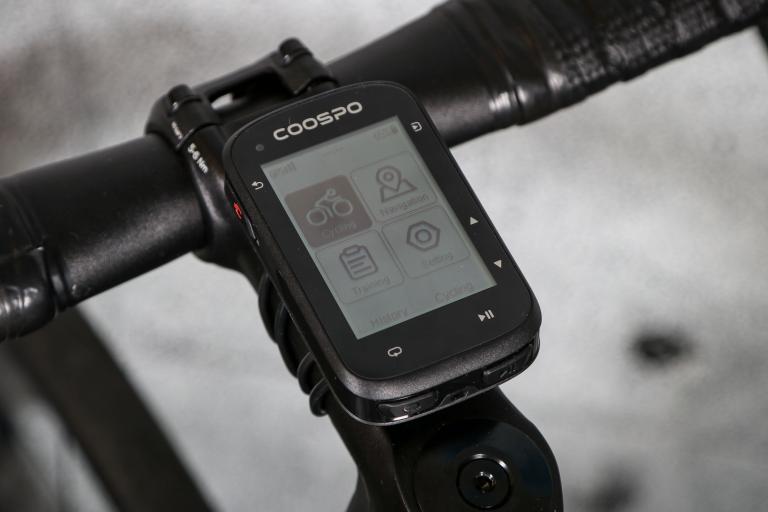
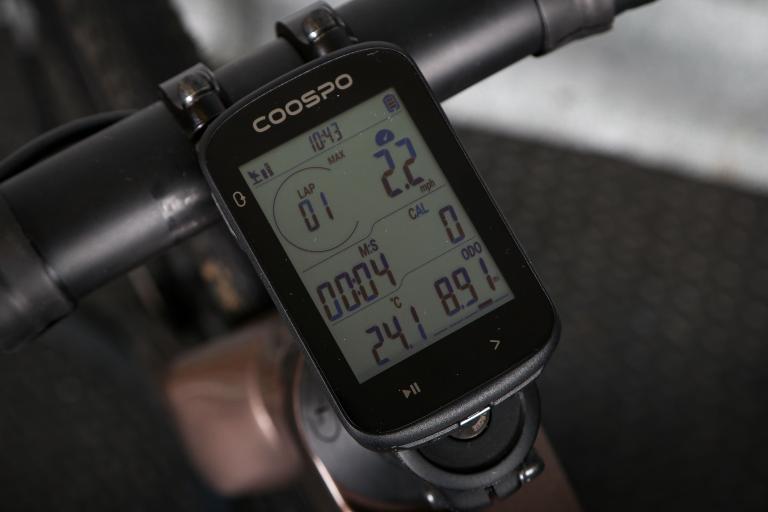
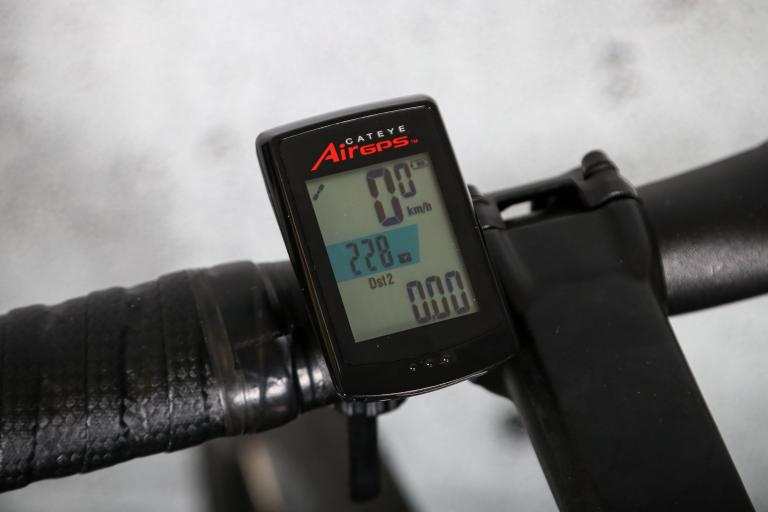

Add new comment
24 comments
Be aware that the temperature readings show between 3 and 4 degrees C lower than actual. Garmin claim this is not a fault. My riding buddies $20 Aldi 'computer' is spot on.
http://roubaixcycling.cc/2016/03/29/garmin-520-gps-whats-it-like-everyday/
Like mine so far. Would like to get hold of an Elemnt to test against it mind.
Great 'real world' review. Seriously considering purchasing a 520, and this review covers all the bits I think I too would use, and not the bits I think I wouldn't.
I did the BOTB too, great event.
Have you had a chance to look any deeper into the Wahoo Elemnt? That is also on my shortlist along with the 520.
I use a 920XT for all my tri training and have an Edge 800 for my road bike...so I'd be inclined to wait for an 820 or similar with full mapping to replace it or, alternatively, have a long look at some of the new Polar stuff. A guy I ride with has one and it is VERY nice. Polar have seriously pulled their fingers out in the last couple of years...and not before time.
Google openstreetmaps and Garmin 520. Easy to replace the lame base maps but not enough room to put much on the device. Garmin wants people to pay more for the 1000.
Um no a smaller cable does not make data transfer faster.....I have a 520 and still shaking it out but it seems Garmin finally, for once, didn't release a new product full of so many bug that it was unusable.
I've been using the 520 for a few weeks, maybe 20 rides. In my opinion its the best cycling gps device to date.
The sträva segments are a nice of a headline but in practice not that great(if you can read the display your not trying hard enough!) but everything else works great, loads of support for HR or PM training and the ergonomics and size are spot on.
I agree about ergonomics, it seems impossible to hold it without pressing buttons randomly.
I've also found the virtual partner thing demoralising as the only person I follow is much faster than me!
the more I use it, the more I get annoyed with it, buttons don't have any space between them to hold it correctly while trying to set it up. My Scott instead of having about 500 miles has now 3500 miles!
If Garmin are good enough to make a device that gets 9/10 why don't they fix the software on the 510 and Garmin Connect? I find it hard to believe that this is really that good.
It doesn't feel good to use the buttons, I much prefer the touchscreen 510 over this, when using this new 520 with live segments or following routes I've actually twisted it out of the mounts pressing the buttons scrolling through info on screen, doesn't appear to have different bike profiles option either, poor review in my opinion.
These seem to have been subsumed into the Activity Profiles.
You cannot enter a value for the odometer for a bicycle in profiles. All profiles values start from 0 so if your bicycle has ie 445 miles on its clock, forget it. The feel of the unit in your hands is all wrong too.
Fair enough if that's important to you, can't say i've ever hankered after it but hey - also using 'Full Edit' on Garmin Connect to set the correct current mileage, clearing the odometer on the device then sync'ing should do what you want I believe.. at least that's what you used to be able to do.
"in your hands" ? You do know this is typically attached to your bike don't you... what are you doing with the poor thing ?
Do I really attach it to my bicycle? Wondered why I couldn't see the display when I was out riding while it was in my pocket. Please don't patronise me...
I was meant to be somewhat light-hearted, but clearly that's not come across, but the point remains - what does the 'feel of the unit in the hand' have to do with anything ? It's not a hand-held device, as you're obviously aware of, apart from any of the other obvious points...
Any thoughts on how to set the odometer correctly, seeing as you don't like be patronised ?
RE: odometer, emailed Garmin, usual useless Garmin response. There are long winded text edited stuff or set it in Garmin Connect apparently. I bought unit as a replacement for my 705 and while the 520 is probably very good, it's no cigar at the moment. It does feel very awkward in the hand to press buttons.
I think it was a fair point. Does it need to feel particularly ergonomic, seeing as you don't need to hold it at all as part of its core function? It's bit a like saying "the feel of my turbo trainer in my hands is all wrong".
Do you mean that it feels a bit cheap and flimsy?
I find the ergonomics of the 520 are poor compared to my older 705, the side buttons more awkward to press due to the thin depth of the case and the sharp edge of the screen. I certainly feel the need to hold the unit when trying to press any of the side buttons for fear of rotating the unit and it dropping off. The start and lap buttons are better but also seem to be more under the unit than one the end, the 705 had them on the front which was better IMO
Ergonomics poor, exactly how I would describe it
That I can relate to.
No SD card though? I've got a lot of big (many GB) third party maps. Can it store them?
Yep no SD, It has about 50mb free I think, which is about enough for a city and surrounding area I believe (I.e. enough for your regular rides, but you'd need to swap which tiles are on the device if going somewhere else)
As I understand it, you can supplement the base map with a far more detailed OpenCycleMap alternative - it still won't do re-routing or get me home type navigation on the device - but it does give you more detail. DC Rainmaker has a guide to that.
I'm crossing my fingers that there's an 820 in the works that will add the full set of navigation features in a device that has physical buttons too.